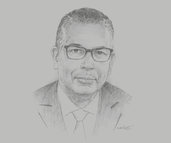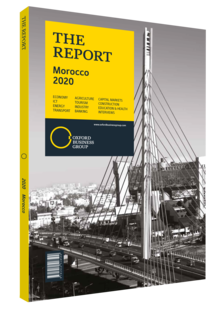Abderrahim El Hafidi, General Director, National Office for Electricity and Drinking Water (Office National de l’Electricité et de l’Eau Potable, ONEE): Interview

Interview: Abderrahim El Hafidi
How would you assess Morocco’s efforts to manage its energy bill, and will it be reduced in the future?
ABDERRAHIM EL HAFIDI: Morocco is focusing on rationalising expenditure, while providing high-quality service and optimising investments. The electricity mix has undergone profound transformations. In the 2000s we relied mainly on fossil fuels, while today we have diversified our offer by promoting the development of local, clean energies, such as solar, wind and hydro.
It has been several years since we have understood the importance of these energy sources for the country’s future. In 2009 the average cost of a kilowatt produced by renewable energy was four times higher than the current one. We have already achieved competitive production levels, and the 2020 target, which aims for a 42% share of renewables in the country’s capacity mix, is on track and will soon be met. This is also the case regarding our 2030 target, as we expect 52% of the capacity mix to come from renewables by this time.
As a producer, our main objective now is to have a highly competitive production cost per kilowatt. As part of its wind energy programme, Morocco aims to produce one of the cheapest KWh in the world with a 850-MW integrated wind project located in five different sites, at an average cost of $0.03 per KWh. Renewable energies will generate intermittency due to the fluctuation of wind and sun cycles, hence the importance of having the necessary skills to be able to store energy and to manage intermittency and production stoppages of wind and solar facilities.
Today, Morocco has a considerable electricity reserve margin, thanks to the additional production capacity of ONEE, and to the exchanges between Morocco and Europe, which give us flexibility to meet peaks in electricity demand. Morocco can now export some surplus electricity to Spain when conditions are favourable for renewable energy generation. Overall, the country’s electricity mix has been completely re-engineered thanks to the rise of renewable energies, although the baseload of energy needs remains fuelled by coal. Renewable energy remains the priority when pumping energy from the grid. ONEE is currently delegating the renewable part of its business to the firm Masen, but will continue to produce electricity from “clean coal”, natural gas, imports and everything linked to pumped energy transfer stations, such as hydropower stations and hydroelectric plants, provided they fall within the grid stability requirements.
What are the objectives of the new electricity and drinking water investment programme?
EL HAFIDI: ONEE is the main producer of drinking water, and has one of the main production stations in Africa. Today, it produces 1.1bn cu metres of drinking water per year, and fulfils close to 90% of the country’s needs. It is also involved in water distribution in several cities, particularly in rural areas. A contract between ONEE and the state has also just been approved, announcing investment projects worth Dh51.6bn ($5.4bn) between 2019-23, shared between water and electricity, with Dh25.5bn ($2.7bn) to be invested in the water and sanitation sector. This entails programmes for treatment plants built with surface resources, such as dams, desalination programmes for drinking water, irrigation for agriculture and water supply, and transport capacity-building projects. Attention will be paid to the supply of drinking water in urban areas in order to meet the growing needs of urbanisation. We also aim to increase access to drinking water in rural areas from 97% to 99.3%, benefitting more than 300,000 additional people. Optimisation is another important project, especially in terms of transport, production and distribution efficiency. The move towards digitisation, such as remote reading of water metres, should be of benefit to us. Regarding electricity, our objective is to obtain more than Dh25bn ($2.6bn) of investment to secure an additional capacity of 4262 MW, more than 99% of which should be coming from renewables.
You have reached the limit of premium articles you can view for free.
Choose from the options below to purchase print or digital editions of our Reports. You can also purchase a website subscription giving you unlimited access to all of our Reports online for 12 months.
If you have already purchased this Report or have a website subscription, please login to continue.

